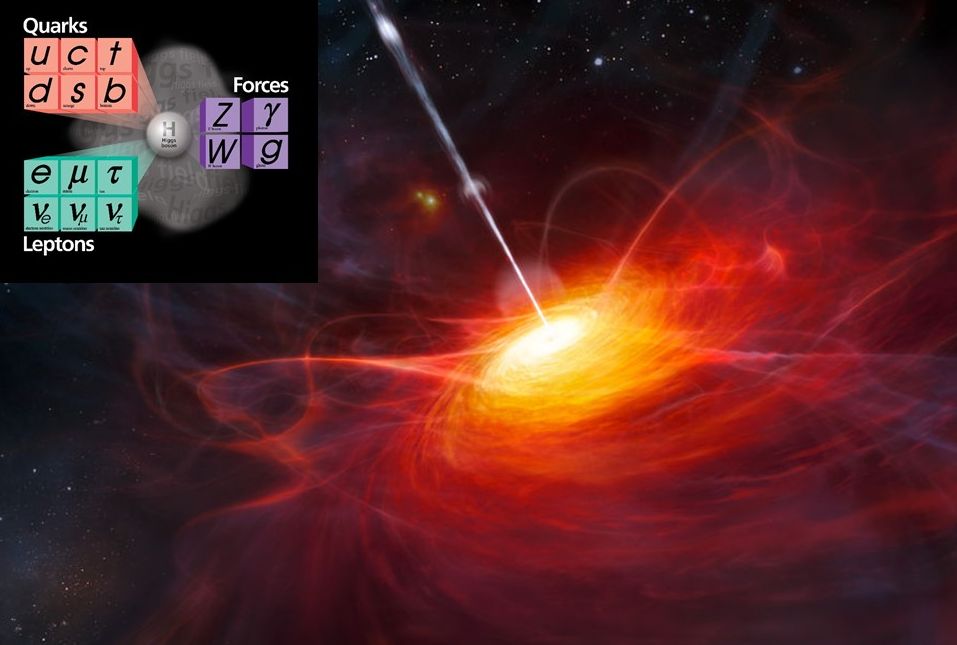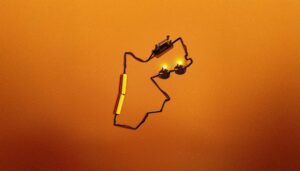من الكوارك إلى الكوازار: رحلة في بنية الكون
محاضرة للدكتور حنا صابات *
(ينظم هذا النشاط بالتعاون بين الجمعية الفلكية الأردنية، والجمعية الفيزيائية الأردنية، والاتحاد العربي لعلوم الفضاء والفلك)
من منظور علمي معاصر، يتألف كوننا من أربعة مكونات أساسية هي: المكان والزمان والمادة والطاقة. وقد أثبتت الفيزياء الحديثة أن هذه المكونات ليست منفصلة عن بعضها البعض، فهي تتفاعل مع بعضها البعض، من ناحية؛ كما أن الحدود بينها ليست حادة، من ناحية أخرى. على سبيل المثال، الزمان يمكنه أن يتحول إلى مكان والعكس صحيح، والمادة يمكنها أن تتحول إلى طاقة والعكس صحيح أيضاً.
وجد الفيزيائيون أن هناك عائلتين أساسيتين من الجسيمات الأولية (أي التي لا تتألف من جسيمات أبسط، طبقاً للنظريات المقبولة)، هي: الكواركات واللبتونات. وهذه الجسيمات تتبادل التفاعل فيما بينها عن طريق أربع تفاعلات أساسية معروفة هي: التفاعل الجاذبي، التفاعل الكهرومغناطيسي، التفاعل القوي، والتفاعل الضعيف. وأنجح النظريات في وصف الجاذبية حتى الآن هي النظرية العامة في النسبية، التي تعبّر عن الجاذبية كانحناء في الزمان-مكان (الزمكان) رباعي الأبعاد. بينما أنجح النظريات (المختبرة تجريبياً) في وصف القوى الثلاث الأخرى هي نظرية المجال الكمومي.
في هذه المحاضرة، سنذهب في رحلة في بنية الكون، بدءًا بالمستوى المجهري، مروراً بالمستوى الجاهري، وانتهاءًا ببنية الكون ككل—في الحقيقة بدءًا بما هو دون الكوارك، وانتهاءًا بما هو بعد الكوازار! وحتى يكون العرض مكتملاً، سنلقي بعض الضوء أيضاً على إشكالية المادة المظلمة والطاقة المظلمة في الكون.
* المحاضر هو عميد معهد الفلك وعلوم الفضاء في جامعة اَل البيت سابقاً، والرئيس السابق للجمعية الفلكية الأردنية. وهو حاصل على درجة الدكتوراه في فيزياء فلك الطاقة العالية High-Energy Astrophysics من جامعة بول ساباتييه (تولوز الثالثة) Université Paul Sabatier (Toulouse III) في فرنسا عام 2002.
From Quarks to Quasars
A Journey in the Structure of the Universe
A Lecture By:
Dr. Hanna A. Sabat *
From a modern scientific perspective, our Universe is composed of four basic constituents: space, time, matter and energy. Modern physics had proven that these constituents are not separate from each other: on the one hand, they interact with each other; on the other hand, they do not have sharp boundaries as well. For instance, time may transform to space and vice versa; and matter may transform to energy, and vice versa.
Physicists found that there are two basic families of elementary particles (i.e., not composed of more basic particles, according to accepted theories), which are quarks and leptons. These particles interact with each other via four basic known interactions: gravitational, electromagnetic, strong, and weak, interaction. So far, the most successful theory of gravity is the general theory of relativity (GTR) which expresses gravity as a curvature in the four-dimensional space-time. While the most successful (experimentally supported) theory in describing the other three interactions is the quantum field theory (QFT).
In this lecture, we shall make a journey in the structure of the Universe, beginning with the micro-scale, passing through the macro-scale, and ending up with the large-scale structure of the Universe—in fact, beginning with what is below the quark, and ending up with what is beyond the quasar! In order to be complete, we shall also shed some light on the problem of dark matter and dark energy in the Universe.
* The lecturer is the former dean of the Institute of Astronomy and Space Science at Al al-Bayt University, and the former President of the Jordanian Astronomical Society (JAS). He holds a PhD degree in high-energy astrophysics from Université Paul Sabatier (Toulouse III) in France.





